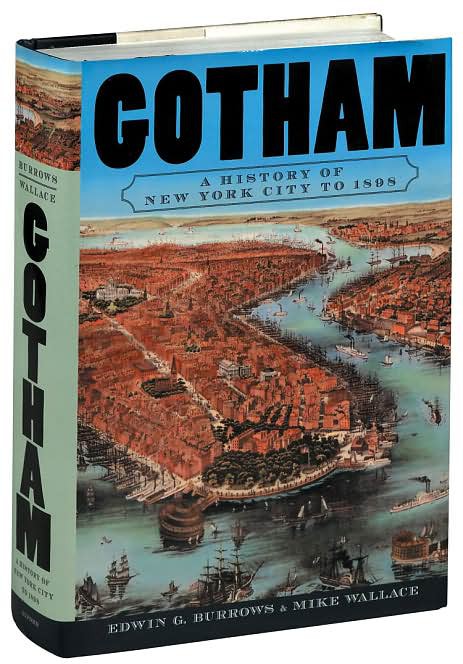
Gotham: A History of New York City to 1898 PDF
Preview Gotham: A History of New York City to 1898
Like the city it celebrates, Gotham is massive and endlessly fascinating. This narrative of well over 1,000 pages, written after more than two decades of collaborative research by history professors Edwin G. Burrows and Mike Wallace, copiously chronicles New York City from the primeval days of the Lenape Indians to the era when, with Teddy Roosevelt as police commissioner, the great American city became regarded as "Capital of the World." The sheer bulk of the book may be off- putting, but the reader can use a typically New York approach: Those who don't settle in for the entire history can easily "commute" in and out to read individual chapters, which stand alone nicely and cover the major themes of particular eras very well.
While Gotham is fact-laden (with a critical apparatus that includes a bibliography and two indices--one for names, another for subjects), the prose admirably achieves both clarity and style. "What is our take, our angle, our schtick?" ask the authors, setting a distinctly New York tone in their introduction. No matter what it's called, their method of weaving together countless stories works wonderfully. The startlingly detailed research and lively writing bring innumerable characters (from Peter Minuit to Boss Tweed) to life, and even those who think they know the history of New York City will no doubt find surprises on nearly every page. Gotham is a rarity, reigning as both authoritative history and page-turning story. --Robert McNamara
From Publishers WeeklyA tome matching the size of its subject, this doorstopper (the first of a two-volume history) more than justifies the 20 years Burrows and Wallace spent on itAnot to mention the space it will take on the nightstands of New Yorkers actual, former, future and presumptive. Its massive size permits the inclusion of details, minor characters and anecdotes of everyday life that vibrantly communicate the city's genesis and evolution. The authors have synthesized histories from various perspectivesAcultural, economic, political, etc.Ainto a novelistic narrative, providing the context for stories of the diverse denizens who shaped the city. Both New York academics (Brooklyn College and CUNY, respectively), Burrows and Wallace have produced a historical work that merits the term "definitive" yet still manages to entertain. Underneath reasoned academic prose lies a populist bent, unflinching in relating ugly events and describing the unsavory behavior of prominent figures; in its original sense, "Gotham" denotes a town of tricksters and fools, and this book is full of both. Vague documentation may, on occasion, frustrate the academic reader, but such quibbles should be left to professional historians. The rest will read with pleasure and await the companion volume's promised appearance in the year 2000. 160 photos and linecuts and 15 maps not seen by PW. 40,000 copy first printing.
Copyright 1998 Reed Business Information, Inc.
